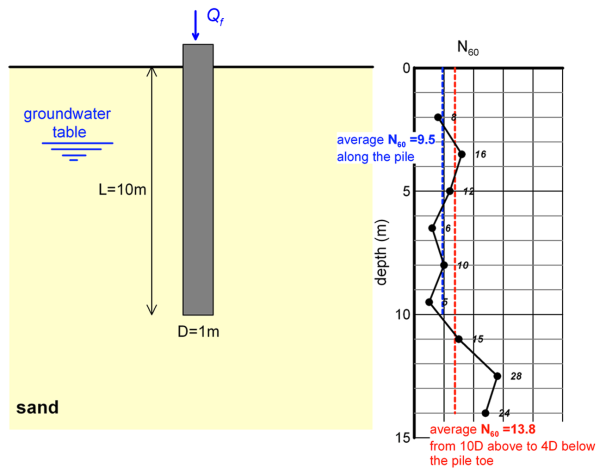Example 6.5
Estimation of the ultimate geotechnical strength of a pile subjected to axial compressive load based on SPT test results
Determine the ultimate geotechnical strength Qf of the pile shown below. The pile is subjected to axial compressive load and is embedded in homogeneous sand. Use the SPT-based method (Chapter 6.11) and the SPT results provided below. Ignore the weight of the pile in the calculations.

Answer:
1. Calculation of skin friction resistance, Qsf:
We will use the upper bound of Eq. 6.21. for driven piles. The average SPT value along the length of the pile N60,shaft is equal to N60,shaft = 9.5, thus:
![]()
2. End-bearing resistance, Qb:
For the estimation of the end-bearing resistance, we have to find the average SPT value at the vicinity of the pile toe, considering blow counts about 10D = 10m above and 4D = 4m below the pile toe (Chapter 6.11). As depicted from the figure above, the average SPT value to be considered for the estimation of the end-bearing resistance is Ν60,toe = 13.8. Substituting in Eq. 6.22:

3. Ultimate geotechnical strength, Qf:
The ultimate geotechnical strength of the pile is again the sum of its skin friction and end-bearing resistance:
![]()
Notice that considering the full extent of the possible failure surface from Figure 6.22 to get the average N60 value implies that toe failure for this short pile with L/D=10 will reach the soil surface. This is probably unrealistic, yet it is a conservative assumption, as generally N60 values increase with depth.
While using similar methodologies that are based on non-site specific correlations, care must be taken so that appropriate, conservative risk ratings are introduced during the estimation of the average risk rating after AS2159.

